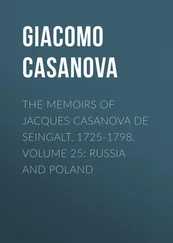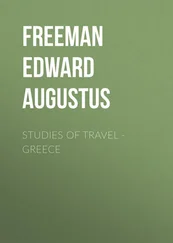John Stephens - Incidents of Travel in Greece, Turkey, Russia, and Poland, Vol. 2 (of 2)
Здесь есть возможность читать онлайн «John Stephens - Incidents of Travel in Greece, Turkey, Russia, and Poland, Vol. 2 (of 2)» весь текст электронной книги совершенно бесплатно (целиком полную версию без сокращений). В некоторых случаях можно слушать аудио, скачать через торрент в формате fb2 и присутствует краткое содержание. Год выпуска: 1838, Жанр: Путешествия и география, на английском языке. Описание произведения, (предисловие) а так же отзывы посетителей доступны на портале библиотеки ЛибКат.
- Название:Incidents of Travel in Greece, Turkey, Russia, and Poland, Vol. 2 (of 2)
- Автор:
- Жанр:
- Год:1838
- ISBN:нет данных
- Рейтинг книги:4 / 5. Голосов: 1
-
Избранное:Добавить в избранное
- Отзывы:
-
Ваша оценка:
- 80
- 1
- 2
- 3
- 4
- 5
Incidents of Travel in Greece, Turkey, Russia, and Poland, Vol. 2 (of 2): краткое содержание, описание и аннотация
Предлагаем к чтению аннотацию, описание, краткое содержание или предисловие (зависит от того, что написал сам автор книги «Incidents of Travel in Greece, Turkey, Russia, and Poland, Vol. 2 (of 2)»). Если вы не нашли необходимую информацию о книге — напишите в комментариях, мы постараемся отыскать её.
Incidents of Travel in Greece, Turkey, Russia, and Poland, Vol. 2 (of 2) — читать онлайн бесплатно полную книгу (весь текст) целиком
Ниже представлен текст книги, разбитый по страницам. Система сохранения места последней прочитанной страницы, позволяет с удобством читать онлайн бесплатно книгу «Incidents of Travel in Greece, Turkey, Russia, and Poland, Vol. 2 (of 2)», без необходимости каждый раз заново искать на чём Вы остановились. Поставьте закладку, и сможете в любой момент перейти на страницу, на которой закончили чтение.
Интервал:
Закладка:
I was obliged to decline dining with Mr. Wilkins in consequence of an engagement with my friend the Pole; and, returning, I found him at the window with a book in his hand, precisely in the same position in which I had left him. After dinner a servant came in and delivered a message, and he proposed a walk on the Admiralty Boulevards. It was the fashionable hour for promenade, and, after a turn or two, he discovered his fair enslaver, accompanied by her father and several ladies and gentlemen, one of whom seemed particularly devoted to her. She was a pretty little girl, and seemed to me a mere child, certainly not more than fifteen. His admiration had commenced on the Boulevards the first afternoon of his arrival, and had increased violently during the whole day, while he was sitting at the window. He paraded me up and down the walk once or twice, and, when they had seated themselves on a bench, took a seat opposite. He was sure she was pleased with his admiration, but I could not see that her look indicated any very flattering acknowledgment. In fact, I could but remark that the eyes of the gentlemen were turned toward us quite as often as those of the lady, and suggested that, if he persisted, he would involve us in some difficulty with them; but he said there could not be any difficulty about it, for, if he offended them, he would give them satisfaction. As this view of the case did not hit my humour, I told him that, as I had come out with him, I would remain, but if he made any farther demonstrations, I should leave him, and, at all events, after that he must excuse me from joining his evening promenades. Soon after they left the Boulevards, and we returned to our hotel, where he entertained me with a history of his love adventures at home, and felicitations upon his good fortune in finding himself already engaged in one here.
Sunday. Until the early part of the tenth century the religion of Russia was a gross idolatry. In nine hundred and thirty-five, Olga, the widow of Igor the son of Runic, sailed down the Dnieper from Kief, was baptized at Constantinople, and introduced Christianity into Russia, though her family and nation adhered for a long time to the idolatry of their fathers. The great schism between the Eastern and Western churches had already taken place, and the Christianity derived from Constantinople was of course of the Greek persuasion. The Greek Church believes in the doctrines of the Trinity, but differs from the Catholic in some refined and subtle distinction in regard to what is called the procession of the Holy Ghost. It enjoins the invocation of saints as mediators, and permits the use of pictures as a means of inspiring and strengthening devotion. The well-informed understand the use for which they are intended, but these form a very small portion of the community, and probably the great bulk of the people worship the pictures themselves. The clergy are, in general, very poor and very ignorant. The priests are not received at the tables of the upper classes, but they exercise an almost controlling influence over the lower, and they exhibited this influence in rousing the serfs against the French, which may be ascribed partly, perhaps, to feelings of patriotism, and partly to the certainty that Napoleon would strip their churches of their treasures, tear down their monasteries, and turn themselves out of doors. But of the population of fifty-five millions, fifteen are divided into Roman Catholics, Armenians, Protestants, Jews, and Mohammedans, and among the Caucasians, Georgians, Circassians, and Mongol tribes nearly two millions are pagans or idolaters, Brahmins, Lamists, and worshippers of the sun.
For a people so devout as the Russians, the utmost toleration prevails throughout the whole empire, and particularly in St. Petersburgh. Churches of every denomination stand but a short distance apart on the Newski Perspective. The Russian cathedral is nearly opposite the great Catholic chapel; near them is the Armenian, then the Lutheran, two churches for Dissenters, and a mosque for the Mohammedans! and on Sunday thousands are seen bending their steps to their separate churches, to worship according to the faith handed down to them by their fathers.
Early in the morning, taking with me a valet and joining the crowd that was already hurrying with devout and serious air along the Newski Perspective, I entered the Cathedral of our Lady of Cazan, a splendid monument of architecture, and more remarkable as the work of a native artist, with a semicircular colonnade in front, consisting of one hundred and thirty-two Corinthian columns thirty-five feet high, somewhat after the style of the great circular colonnade of St. Peter's at Rome, and surmounted by a dome crowned with a cross of exquisite workmanship, supported on a large gilded ball. Within, fifty noble columns, each of one piece of solid granite from Finland, forty-eight feet high and four feet in diameter, surmounted by a rich capital of bronze, and resting on a massive bronze base, support an arched roof richly ornamented with flowers in bas-relief. The jewels and decorations of the altar are rich and splendid, the doors leading to the sanctum sanctorum, with the railing in front, being of silver. As in the Catholic churches, there are no pews, chairs, or benches, and all over the floor were the praying figures of the Russians. Around the walls were arranged military trophies, flags, banners, and the keys of fortresses wrested from the enemies of Russia; but far more interesting than her columns, and colossal statues, and military trophies, is the tomb of the warrior Kutuzow; simple, and remarkable for the appropriate warlike trophy over it, formed of French flags and the eagles of Napoleon. Admiration for heroism owns no geographical or territorial limits, and I pity the man who could stand by the grave of Kutuzow without feeling it a sacred spot. The Emperor Alexander with his own hands took the most precious jewel from his crown and sent it to the warrior, with a letter announcing to him his elevation to the rank of Prince of Smolensko; but richer than jewels or principalities is the tribute which his countrymen pay at his tomb.
The church of our Lady of Cazan contains another monument of barbarian patriotism. The celebrated leader of the Cossacks during the period of the French invasion, having intercepted a great part of the booty which the French were carrying from Moscow, sent it to the metropolitan or head of the church, with a characteristic letter, directing it to be "made into an image of the four Evangelists, and adorn the church of the Mother of God of Cazan." The concluding paragraph is, "Hasten to erect in the temple of God this monument of battle and victory; and while you erect it, say with thankfulness to Providence, the enemies of Russia are no more; the vengeance of God has overtaken them on the soil of Russia; and the road they have gone has been strewed with their bones, to the utter confusion of their frantic and proud ambition."
(Signed) "Platoff."
From the church of our Lady of Cazan I went to the Protestant church, where I again joined in an orthodox service. The interior of the church is elegant, though externally it can scarcely be distinguished from a private building. The seats are free, the men sitting on one side and the women on the other. Mr. Law, the clergyman, has been there many years, and is respected and loved by his congregation. After church I walked to the convent of Alexander Newski, the burial-place of Prince Alexander, who obtained in the thirteenth century a splendid victory over the allied forces of Sweden, Denmark, and Livonia; afterward became a monk, and for his pure and holy life was canonized, and now ranks among the principal saints in the Russian calendar. The warrior was first buried at Moscow, but Peter the Great had his remains transported with great ceremony to this place, a procession of a thousand priests walking barefoot all the way. The monastery stands at the extreme end of the Newski Perspective, and within its precincts are several churches and a large cemetery. It is the residence of the distinguished prelates of the Greek Church and a large fraternity of monks. The dress of the monks is a loose black cloak and round black cap, and no one can be admitted a member until the age of thirty. We entered a grand portal, walked up a long avenue, and, crossing a bridge over a stream, worked our way between lines of the carriages of nobles and ladies, and crowds of the people in their best bell-crowned hats; and, amid a throng of miserable beggars, penetrated to the door of the principal church, a large and beautiful specimen of modern Corinthian architecture. I remarked the great entrance, the lofty dome, the fresco paintings on the ceilings, and the arabesque decorations on the walls; the altar-piece of white Carrara marble, paintings by Rubens and Vandyck, the holy door in the iconastos, raised on a flight of steps of rich gilded bronze, and surmounted by the representation of a dazzling aureola of different colored metals, and in the centre the initials of that awful name which none in Israel save the initiated were permitted to pronounce. I walked around and paused before the tomb of the warrior saint.
Читать дальшеИнтервал:
Закладка:
Похожие книги на «Incidents of Travel in Greece, Turkey, Russia, and Poland, Vol. 2 (of 2)»
Представляем Вашему вниманию похожие книги на «Incidents of Travel in Greece, Turkey, Russia, and Poland, Vol. 2 (of 2)» списком для выбора. Мы отобрали схожую по названию и смыслу литературу в надежде предоставить читателям больше вариантов отыскать новые, интересные, ещё непрочитанные произведения.
Обсуждение, отзывы о книге «Incidents of Travel in Greece, Turkey, Russia, and Poland, Vol. 2 (of 2)» и просто собственные мнения читателей. Оставьте ваши комментарии, напишите, что Вы думаете о произведении, его смысле или главных героях. Укажите что конкретно понравилось, а что нет, и почему Вы так считаете.







![William Frith - John Leech, His Life and Work. Vol. 1 [of 2]](/books/747171/william-frith-john-leech-his-life-and-work-vol-thumb.webp)

![William Frith - John Leech, His Life and Work, Vol. 2 [of 2]](/books/748201/william-frith-john-leech-his-life-and-work-vol-thumb.webp)


